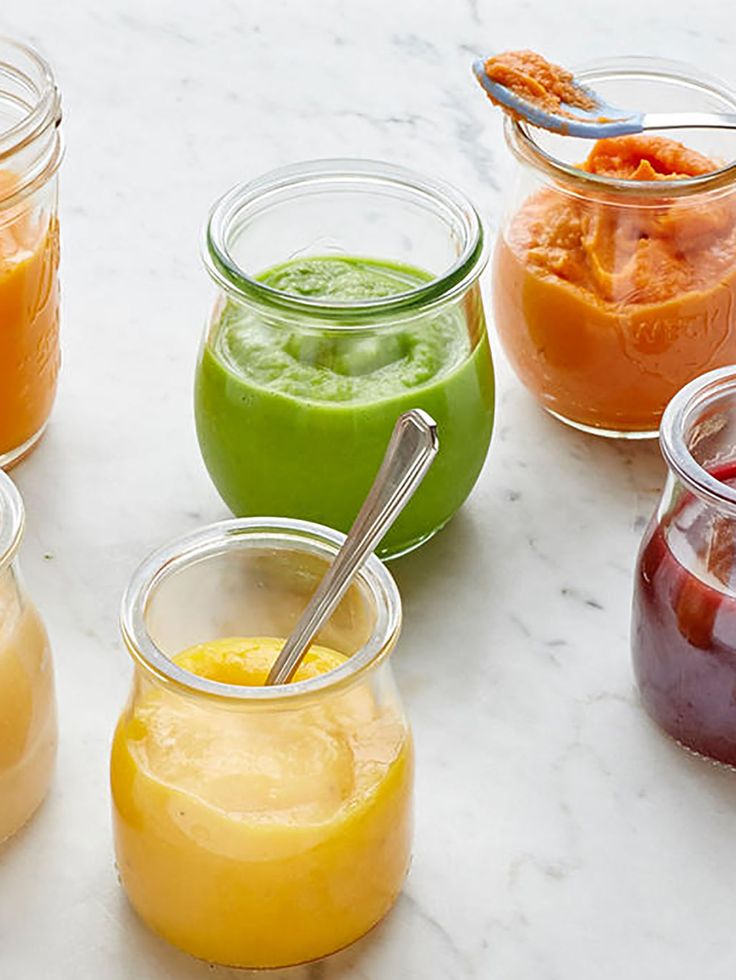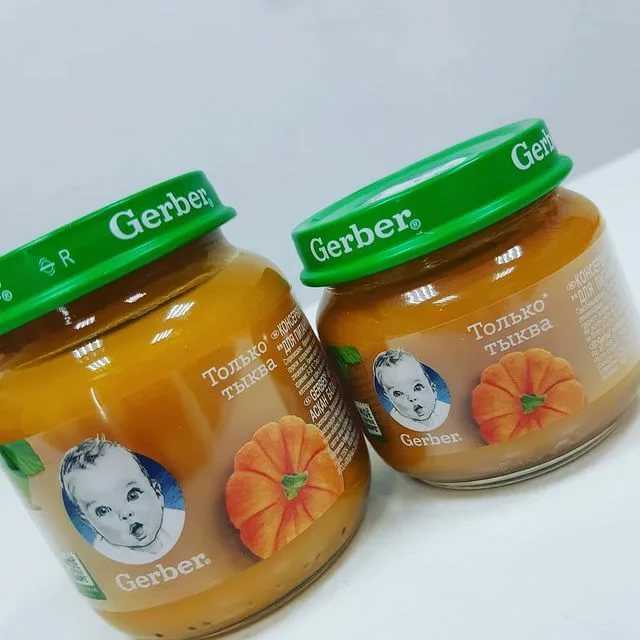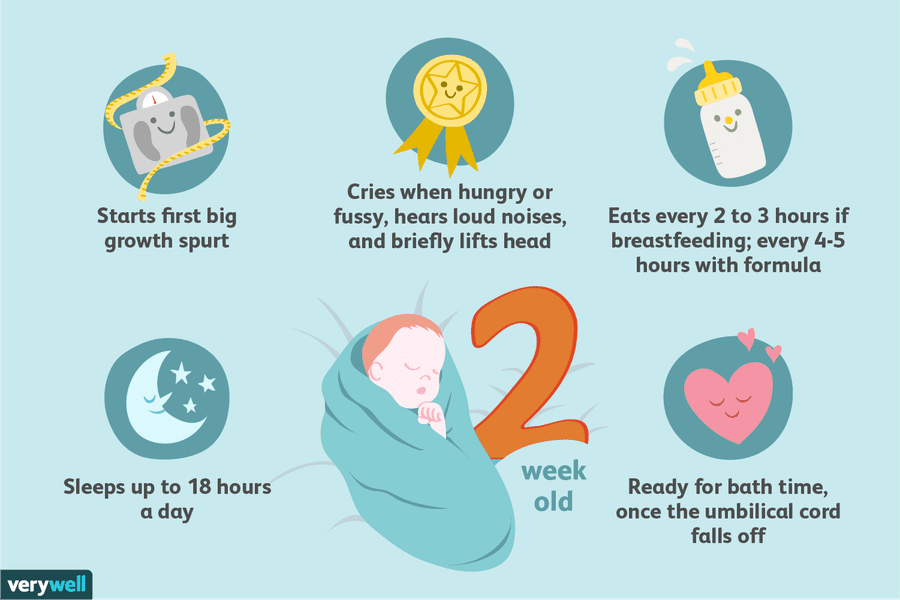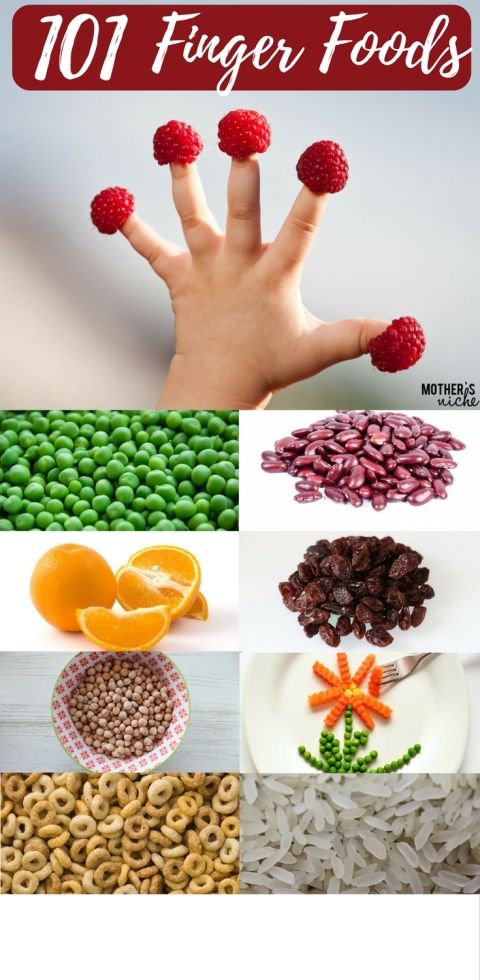Baby food peas mixed with
Peas Baby Food Recipes and Peas for Baby Food, Learn about Introducing Peas to Baby
The nutritional value of peas is amazing when you think of the small size of a cup of peas. Did you know that one cup of peas contains more protein that a tablespoon of peanut butter and also provides Calcium, Vitamin A and C and Iron too.
These wonderful little vegetables are a great first “green” food for baby as they are nutritious, and mostly pleasant to eat. When making homemade peas for baby, you may find it tough getting the “skins” to puree smoothly. If this is the case and your baby is not used to textures yet, you might wish to run them through a strainer or sieve.
The Goodness of Peas
Peas (1 cup steamed/boiled)
| VITAMINS Vitamin A – 955.2iu Vitamin C – 22.72 mg Niacin – 3.23 mg Folate – 100.8 mcg Vitamin B1 (thiamine) – . Vitamin B6 – .35 mg Contains other vitamins in small amounts. | MINERALS Potassium – 433.6 mg Phosphorus – 187.2 mg Magnesium – 62.4 mg Calcium – 43.2 mg Sodium – 4.8 mg Selenium – 3.0 mg Iron – 2.5 mg Zinc – 1.9 mg Manganese – .8 mg Also contains small amount of copper. |
When can I introduce Peas my baby?
Peas are typically recommended for introduction into a baby’s diet between 6-8 months old. As always, it is recommended that you thoroughly discuss any feeding issues with your pediatrician as generalities may not apply to your child.
How to select and store peas
According to the EWG, peas are one of the 15 foods least contaminated with pesticides so purchasing organic is your choice.
“When selecting fresh green peas, check the pod carefully. Look for peas that are firm, crisp, with a bright green color, and a fresh appearance.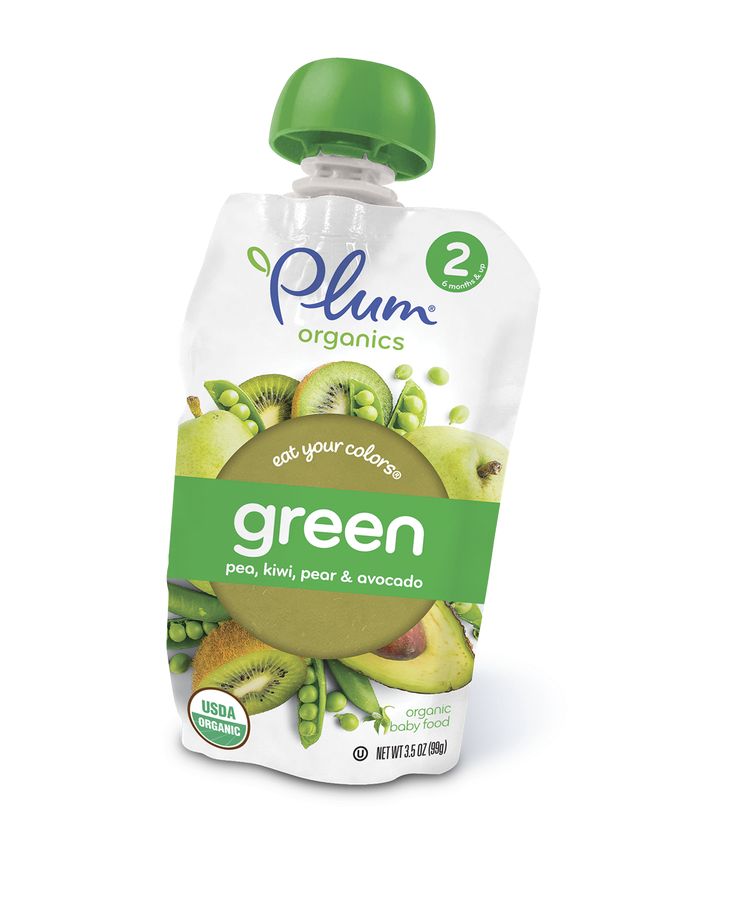 Fresh peas will feel almost velvet-like when you handle them. Try to buy medium sized pods rather than large ones. Avoid tough, thick-skinned pods, as this is an indication that the peas are over-matured, as well as those that exhibit poor color or show any sign of decay or wilting.
Fresh peas will feel almost velvet-like when you handle them. Try to buy medium sized pods rather than large ones. Avoid tough, thick-skinned pods, as this is an indication that the peas are over-matured, as well as those that exhibit poor color or show any sign of decay or wilting.
Do not buy peas that are already shelled because you never know when they were shelled. When you bring green peas home from the market, remember they have a very short shelf life, so use them right away.”˚
The best way to cook peas for homemade baby food
Steaming or boiling peas in a scant amount of water is the best way to cook peas for baby food. For a nice flavor, cook peas in a homemade vegetable, chicken or beef stock.
Enjoy these Few Peas Baby Food Recipes
Peas – Basic Baby Food Recipe – same method for Green BeansDirections:
Step 1: If using fresh Peas, open the pods and scrape out the peas from the pod.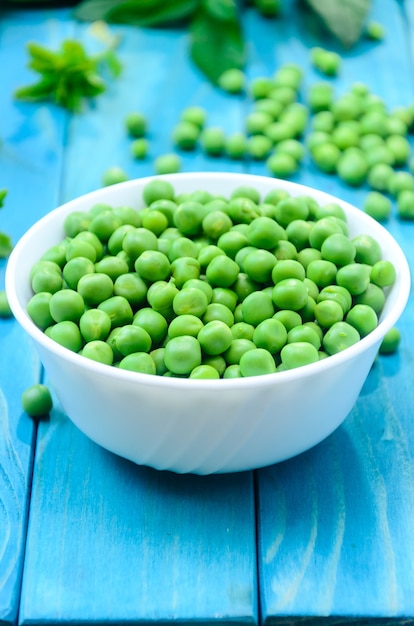
If using frozen Peas (or Green Beans), cook according to package directions.
Step 2: Place fresh peas into a steamer basket in a pan with a just enough water to slightly show through in the basket.
Step 3: Steam until very tender; be sure to check on the water level.
Step 4: Reserve any left over water to use for thinning out the peas.
Step 5: Place into your choice of appliance for pureeing and begin pureeing.
It is best to use the setting that makes the finest liquid purees – green bean and pea skins are rather difficult to completely puree. Using a blender rather than a food processor or stick mixer might be better as well.
Plunging hot cooked peas into a bowl of ice cold water is known to help make a smoother puree.
Step 6: Add the reserved water as necessary to achieve a smooth, thin consistency
Step 7: You may wish to push the peas (or green beans) through a sieve or mesh strainer to get rid of any remaining skins
Nana’s Creamed Peas & Nuggets – 8 months+ due to dairy
Ingredients:
- 4 cups peas, fresh, frozen or canned as a last resort
- 1 cup milk
- 2 tablespoons flour
- 2 tablespoons butter
- salt and pepper to taste
- pieces of chicken, fish, pork or beef
Directions:
Step 1: Melt butter in a large sauce pan.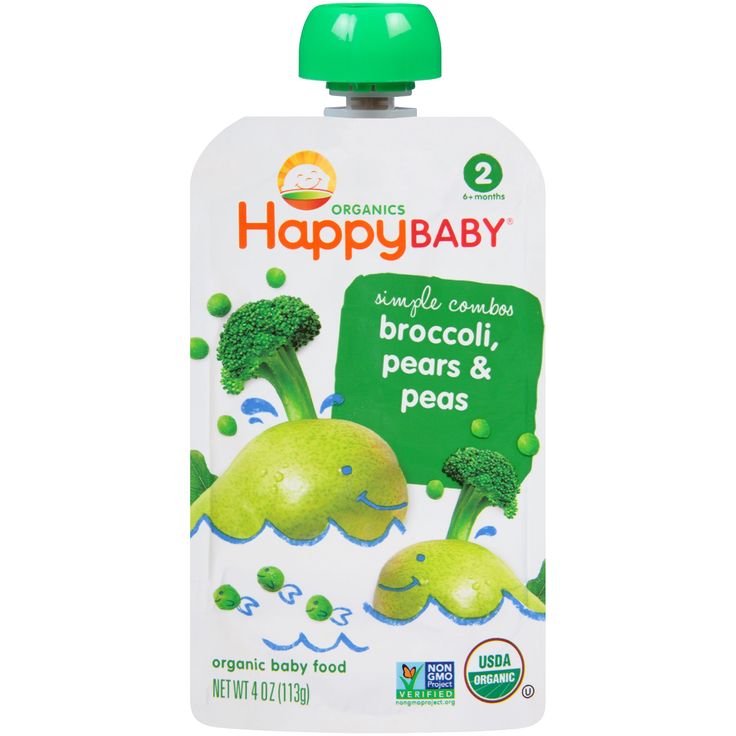 Whisk in flour and allow to cook for 1 minute.
Whisk in flour and allow to cook for 1 minute.
Step 2: Slowly add milk, whisking the whole time to prevent lumps.
Step 3: Add salt and pepper and other spices as you find appropriate.
Step 4: Cook until sauce begins to thicken.
Step 5: Add peas, stir and cook until peas are heated through (about 5-7 minutes)
Step 6: Add meat
Step 7: Serve warm alone or over multi-grain toast or rice.
Minty Peas and Rice
Ingredients:
- 1 1/4 cups reduced-sodium chicken broth (try pacific natural organic!)
- 3/4 cup instant brown rice
- 1 1/2 cups frozen peas (6 ounces)
- 3/4 cup sliced scallions
- 1/4 cup chopped fresh mint
- Freshly ground pepper to taste
Directions:
Step 1: Bring broth to a boil in a large saucepan over high heat.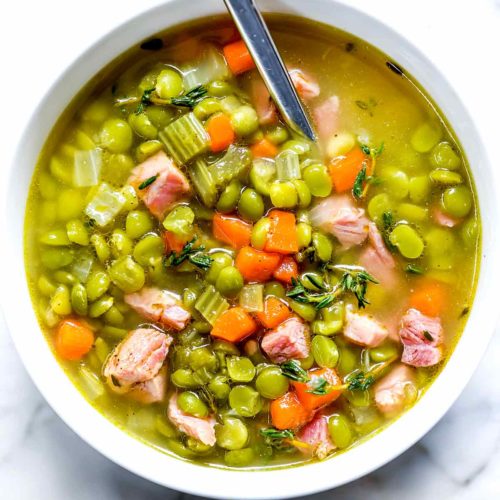 Add rice and bring to a simmer; cover, reduce heat to medium-low and cook for 4 minutes.
Add rice and bring to a simmer; cover, reduce heat to medium-low and cook for 4 minutes.
Step 2: Stir in peas and return to a simmer over high heat. Cover, reduce heat to medium-low and continue to cook until the peas are hot and the rice has absorbed most of the liquid, about 6 minutes.
Step 3: Remove from heat and stir in scallions, mint and pepper. Cover and let stand until the liquid is absorbed, 3 to 5 minutes.
Peas, Cauliflower and Tofu with Spicy Orange
(leave out “*advanced” ingredients for infants between 9-12 months old.)
Ingredients:
- 1 Onion, medium size
- 2 tbs. Garlic, minced
- 1 lb. Peas, fresh or frozen
- 1 lb. Cauliflower, florets, fresh
- 1 lb. Tofu, firm, cubed
- 1/2 cup Almonds*, whole shelled
- 1/3 cup Coconut, unsweetened shredded
- 1 – 12 oz. can *Orange Juice, frozen concentrate
- 2 Navel Oranges, peeled, sectioned, and cut in half
- 2 tsp.
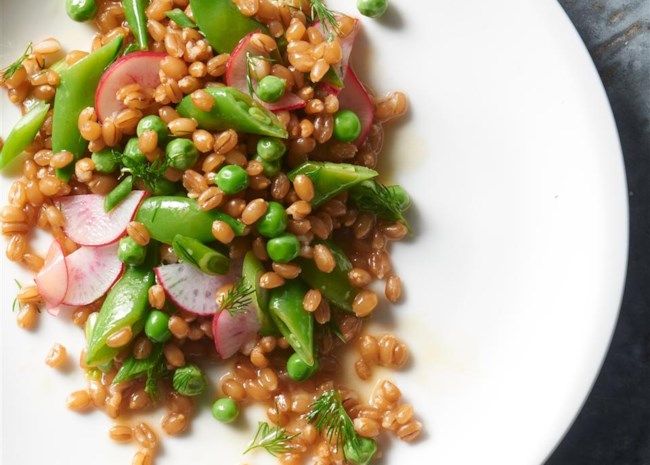 Ginger, ground
Ginger, ground - 1/2 tsp. Turmeric, powder
- 1/4 tsp. Cayenne Pepper, ground
- 3 tbs. Soy Sauce (low sodium)
- 1 tbs. Corn Starch
This recipe is best served over a bed of Brown Rice. Begin cooking the rice at the same time you begin making this recipe. This recipe can be made in a microwave oven, on the stove top or in a wok.
Step 1: Peel and dice the Onion. Peel and mince the Garlic. Cook the Onion and Garlic until the Onions begin to get translucent. Mix frequently.
Step 2: Add the Peas, Cauliflower, Tofu, Orange Juice concentrate, Ginger, Turmeric, and Cayenne Pepper. When the ingredients become hot add the Orange sections, Almonds, and shredded Coconut. Continue mixing to insure that the ingredients are evenly cooked
Step 3: In a cup or small bowl mix the Soy Sauce and Corn Starch until they are smooth. When the vegetables are tender add the Soy Sauce – Corn Starch mixture and continue mixing until the Corn Starch is dissolved and thickens the liquid, and evenly coats the other ingredients. Serve over the Brown Rice and enjoy. Thanks to All Creatures.org for this tasty one!
Serve over the Brown Rice and enjoy. Thanks to All Creatures.org for this tasty one!
- Apples
- Grapes
- Carrots
- Green Beans
- Dried Beans
- White Potato
- Sweet Potato
- Summer Squash – zucchini or yellow/crooked necked
- Winter Squash – butternut, acorn etc.
- Brown Rice
- Lentils
- Chicken
- Beef
- Pork
- Tofu
Resources & Learning More:
Specialty Produce – English-Garden-Sweet Peas
Remember, always consult with your pediatrician regarding introducing solid foods to your baby and specifically discuss any foods that may pose allergy risks for your baby.
SHARE ON FACEBOOK SHARE ON PINTEREST
Best Baby Food Combinations (50 Easy Recipe Ideas + Tips)
Learn this simple approach to making baby food combinations with this master list of ideas. With this post, you’ll always have ideas for easy baby meals that both taste great and are realistic for you to execute…even with a busy schedule!
Baby Food Combinations
Moving from single ingredient baby foods to combinations in stage 2 baby food is such a fun stage of feeding babies because things can get so much more flavorful and interesting! And it means that you can batch cook basic purees and then combine them in so many delicious ways to keep things interesting and nutrition varied.
And while I am not opposed to sometimes buying baby food, each of these ideas is super easy—even if you are very busy. I love to have a stash of these in the freezer to use for quick meals in a pinch. (And to be honest, we still use them in the toddler years as easy ways to offer up veggies!)
TIP: Scroll to the recipe at the end of the post for all of the details, and read through the post for answers to common questions and basics about making baby food combos.
Ingredients in Baby Food Combinations
To make the baby foods in this post, you’ll need basic ingredients (that will obviously vary according to which specific puree you choose). The base purees are made with:
- Apples
- Bananas
- Blueberries
- Butternut Squash
- Carrots
- Mango
- Pear
- Peas
- Spinach
- Sweet Potatoes
TIP: Then, to mix things into combinations, you can add in peanut butter, plain whole milk yogurt, Baby Oatmeal, Baby Rice Cereal, and other purees including those made with beans, chicken, pineapple, avocado, peach, and more.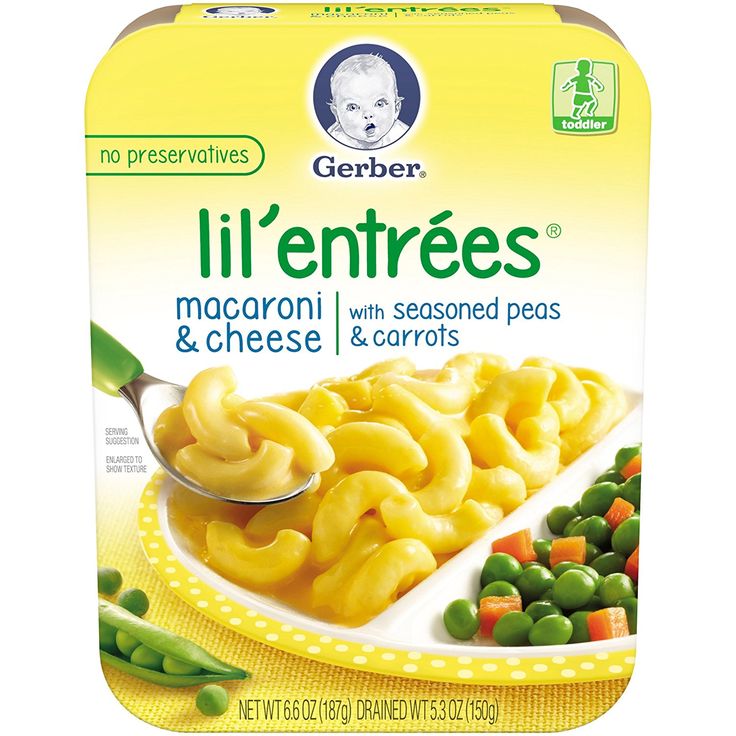
How to Make Stage 2 Baby Food Combinations Step-by-Step
Here’s a look at the simple process involved in making this sort of stage 2 baby food. Scroll down to the bottom of the recipe for the full information.
- Make your base purees.
- Store or freeze until ready to combine.
- Stir together the purees, adding any optional spices or ingredients, until uniform.
- Serve with a spoon or in a reusable pouch.
TIP: I like to make the single ingredient purees and freeze them, then mix and match frozen cubes of purees into yummy combinations. This ensures that you have flexibility to adjust if baby doesn’t love one combination and that you can change up the flavors you’re offering regularly.
How do you combine baby food?
With the way I do it, you simply make two purees (or one puree if you plan to combine it with something like yogurt or oatmeal) and mix them together. You can really do any combinations that sound good to you. I have 10 base purees and 5 easy combination ideas for you to get started, but then you can totally run with it!
I have 10 base purees and 5 easy combination ideas for you to get started, but then you can totally run with it!
Best Baby Food Containers
For storing baby food, I like these Wean Green Storage Cubes (they are glass and are insanely durable—I’ve been using the same set for 8 years), these Beaba Clip Containers, and these Wee Sprout Containers. My go-to reusable pouches include this silicone one from Squeasy Gear and these Wee Sprouts BPA-free plastic ones. (I prefer the 3 ounce size for babies in both pouch options.)
Apple Baby Food Ideas
Once you make basic Apple Puree, you can combine it with so many yummy flavors!
- + plain whole milk yogurt = Apple Yogurt
- + Baby Oatmeal = Apple Oatmeal
- + Spinach Puree = Apple Spinach Baby Food
- + Carrot Puree = Apple Carrot Baby Food
- + Butternut Squash Puree = Apple Squash Baby food
Banana Baby Food Ideas
Try these easy combinations that start with Banana Puree.
- + Peanut Butter Puree = Banana Peanut Butter Baby Food
- + plain whole milk yogurt = Banana Yogurt
- + Baby Oatmeal + Banana Oatmeal
- + Bean Puree = Banana Bean Puree
- + Avocado Puree + Banana Avocado Puree
Baby Food Combinations with Blueberries
Start with Blueberry Puree, then transform it into these fun flavors.
- + plain whole milk yogurt = Blueberry yogurt
- + Baby Oatmeal = Blueberry Oatmeal
- + Banana Puree = Blueberry Banana Puree
- + Mango Puree = Blueberry Mango Puree
- + Peach Puree = Blueberry Peach Puree
Baby Food Combinations with Butternut Squash
Smooth Butternut Squash Puree is a great base as it’s rich in nutrients and has a naturally mild flavor. (Any of these would be great with a tiny pinch of cinnamon.)
- + Pear Puree = Squash Pear Puree
- + Bean Puree = Squash Bean Puree
- + Banana Puree = Squash Banana Puree
- + Applesauce = Squash Apple Puree
- + plain whole milk yogurt = Squash Yogurt
Baby Food Combinations with Carrots
Start with Carrot Puree, then add in new flavors!
- + Apple Puree + Sweet Potato Puree = Carrot Apple Sweet Potato Puree
- + Pear Puree + Sweet Potato Puree = Carrot Pear Sweet Potato Puree
- + Banana Puree = Carrot Banana Baby Food
- + Quinoa Baby Food = Carrot Quinoa Baby Food
- + Bean Puree = Carrot Bean Puree
Baby Food Combinations with Mango
Mango Puree is a cinch to make and is so intensely flavorful—which makes it play really well with other purees!
- + plain whole milk yogurt = Mango Yogurt
- + Baby Oatmeal = Mango Oatmeal
- + Banana Puree = Mango Banana Puree
- + Avocado Puree = Mango Avocado Puree
- + Peach Puree = Mango Peach Puree
Pear Baby Food Combinations
Ripe pears make delicious Pear Baby Food that freezes and combines well.
- + Avocado Puree = Pear Avocado Puree
- + Baby Oatmeal + Cinnamon = Pear Cinnamon Oatmeal
- + Banana Puree = Pear Banana Puree
- + Pea Puree = Pear Pee Puree
- + Carrot Puree = Pear Carrot Puree
Baby Food Combinations with Peas
Keep a bag of frozen peas in the freezer and homemade Pea Puree is just minutes away. Then try:
- + Apple Puree = Pea Apple Puree
- + Pear Puree = Pea Pear Puree
- + Mango Puree = Pea Mango Puree
- + Banana Puree = Pea Banana Baby Food
- + Pineapple Puree = Pea Pineapple Puree
Baby Food Combinations with Spinach
My Spinach Baby food already has peas in it (to ensure it’s smooth and mellow in flavor). You can also combine it with:
- + Apple Puree = Spinach Apple Puree
- + Pear Puree = Spinach Pear Puree
- + plain whole milk yogurt = Savory Spinach Yogurt
- + Quinoa Baby Food and pinch Parmesan cheese = Spinach Parmesan Quinoa
- + Bean Puree = Spinach Bean Puree
Sweet Potato Baby Food Ideas
Start with a batch of Sweet Potato Baby Food and then try these yummy options:
- + Chicken Puree = Sweet Potato Chicken Baby Food
- + Bean Puree = Sweet Potato Bean Puree
- + Applesauce = Sweet Potato Applesauce
- + Carrot Puree + Cinnamon = Cinnamon Sweet Potato Carrot Puree
- + Bean Puree + Cumin = Mexican Sweet Potato Bean Puree
How to Store Baby Food—and Send it to Daycare
I prefer to freeze batches of baby food in a silicone ice cube tray overnight, transfer it to a zip top freezer bag, then store it until I’m ready to serve or combine it.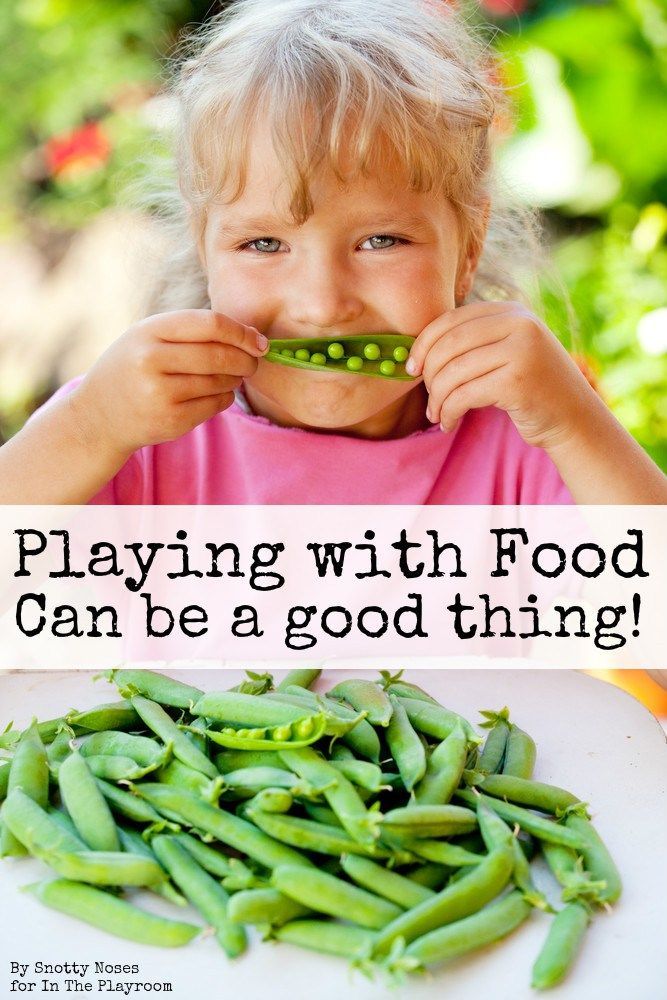 You can then mix and match from the single ingredient purees you have in the freezer by adding a cube or two of two purees to a container. If you do that the night before you plan to serve the food, it will thaw and be ready to stir together.
You can then mix and match from the single ingredient purees you have in the freezer by adding a cube or two of two purees to a container. If you do that the night before you plan to serve the food, it will thaw and be ready to stir together.
This makes it easy to batch cook and have a lot of option to feed baby at home or at daycare.
Tips for Making the Best Baby Food Combinations (Stage 2 & Stage 3)
- These Stage 2 baby foods are great to introduce after baby has started solids with single ingredient baby foods.
- For a 6 month old baby, 1-2 tablespoons baby food may be plenty for a single serving. For a 9 month old baby, they might want ¼ cup or more.
- Adjust the servings based on your child’s hunger, using a roughly one to one ratio of the purees in each combination.
- Read more about the differences in Baby Food Stages here.
- Find my best tips for Baby Food Storage here.
- Add in a little mashed avocado, coconut oil, or Prune Puree to help with baby constipation.
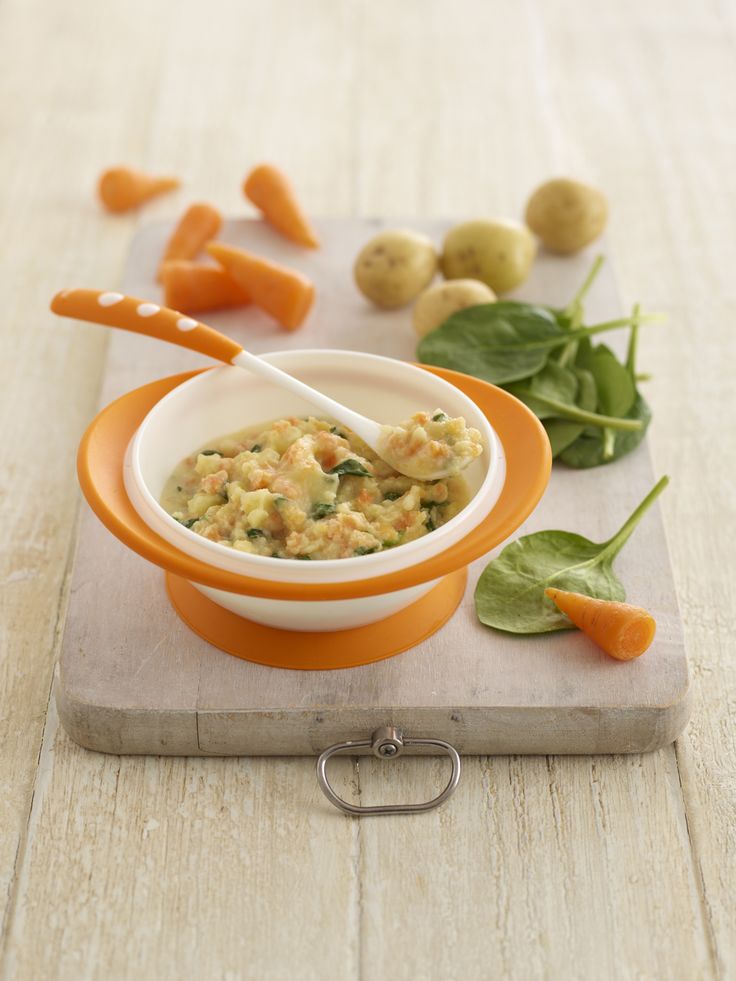
- Serve with a spoon or in a reusable pouch.
I’d love to hear your feedback on these ideas, so please comment and rate the recipe ideas below! I appreciate all of your comments so much.
Prep Time 15 minutes
Cook Time 10 minutes
Total Time 25 minutes
Author Amy Palanjian
Cuisine American
Course Baby Food
Calories 5kcal
Servings 6
1-2 tablespoons Butternut Squash Puree and with one of the following
- ▢ 1-2 tablespoons Pear Puree
- ▢ 1-2 tablespoons Bean Puree
- ▢ 1-2 tablespoons Banana Puree
- ▢ 1-2 tablespoons Applesauce
- ▢ 1-2 tablespoons plain whole milk yogurt
1-2 tablespoons Spinach Puree and one of the following:
- ▢ 1-2 tablespoons Apple Puree
- ▢ 1-2 tablespoons Pear Puree
- ▢ 1-2 tablespoons plain whole milk yogurt
- ▢ 1-2 tablespoons Quinoa Baby Food and pinch Parmesan cheese
- ▢ 1-2 tablespoons Bean Puree
1-2 tablespoons Sweet Potato Puree and one of the following:
- ▢ 1-2 tablespoons Chicken Puree
- ▢ 1-2 tablespoons Bean Puree
- ▢ 1-2 tablespoons Applesauce
- ▢ 1-2 tablespoons Carrot Puree and pinch cinnamon
- ▢ 1-2 tablespoons Bean Puree and pinch cumin
Prepare each puree.
 Freeze in a silicone ice cube tray, transferring the cubes to a freezer bag once solid, or store in the refrigerator as needed.
Freeze in a silicone ice cube tray, transferring the cubes to a freezer bag once solid, or store in the refrigerator as needed.Place roughly equal amounts of the two (or more) purees you plan to combine into a bowl. Stir together. (If the purees are frozen, place a cube or two of each into a bowl or storage container. the night before you plan to serve and let thaw overnight in the fridge before stirring together. Or thaw at room temperature for about 2 hours.)
Serve or store for later.
Mixing Bowl
Reusable Pouch
Silicone Ice Cube Tray
- Taste the purees and add more of a sweeter one if needed.
- Add small pinches of spices like cinnamon, ground ginger, and cumin to add flavor.
- Add small pinches of ground flaxseed to add healthy fats.
- Serve with a baby spoon or in a reusable pouch.
- Pack for daycare if needed in small airtight containers.
- Serve cold or warm just slightly.

- If. baby has a dairy intolerance, use a nondairy, unsweetened nondairy yogurt.
- If baby has a nut allergy, use a nut-free alternative that's unsweetened such as Sunbutter.
Calories: 5kcal, Carbohydrates: 1g, Protein: 1g, Fat: 1g, Saturated Fat: 1g, Polyunsaturated Fat: 1g, Monounsaturated Fat: 1g, Cholesterol: 1mg, Sodium: 2mg, Potassium: 11mg, Fiber: 1g, Sugar: 1g, Vitamin A: 30IU, Vitamin C: 1mg, Calcium: 5mg, Iron: 1mg
Tried this recipe?Rate in the comments and tag @yummytoddlerfood on IG!
Feeding peas - Encyclopedia Baby food
Levchuk Victoria© Levchuk Victoria© peasPeas in complementary foods are necessary for a small child. For diversity and health. Strictly speaking, green peas are not a vegetable. It is part of the legume family, it is a plant that produces pods with seeds inside. Lentils, chickpeas, beans, and peanuts are also legumes.
However, green peas are usually cooked and sold as vegetables.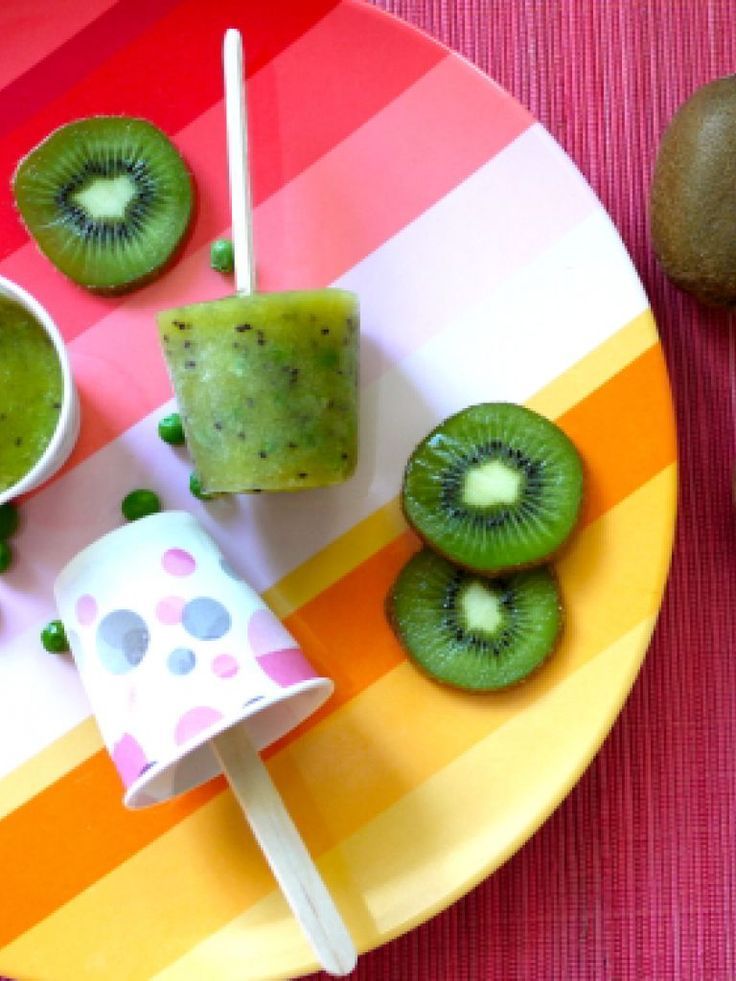 You can find it frozen, fresh or canned.
You can find it frozen, fresh or canned.
The nutritional value of peas is amazing considering the small size of the peas. Did you know that one cup of peas contains more protein than a tablespoon of peanut butter, as well as calcium, vitamins A and C, and iron. These wonderful little vegetables are a great first green food for a baby as they are both nutritious and delicious.
Types of peas
Contents:
Since childhood I know that peas can be different. There are sweet varieties that are grown for salad or just to eat, and there are varieties that are good to dry and eat in the winter.
Peas are one of the earliest crops to ripen in spring and can be used in all kinds of culinary dishes.
Peas are fairly easy to grow. The hardest part of growing peas is choosing which variety to grow. There are basically three types of peas: sugar, shelling and brain peas. There are also fodder varieties , but we will not discuss them here. Each goes by several names, which makes the choice even more confusing. But it is important for us to know their differences.
Each goes by several names, which makes the choice even more confusing. But it is important for us to know their differences.
Sugar variety is the sweetest and is eaten fresh with the pod.
green peas for childrenPeeling variety is used for conservation, long-term storage, it makes delicious soup in winter. Brain peas are always canned.
Pea season from the beginning of June to July, depends on the strip of Russia. In our south, children can already buy from mid-May.
History of peas
green peasWhen exactly peas were first discovered remains a mystery, however, there are many assumptions. For example, the first appearance of the pea is thought to have been in Central Asia, especially in Burma and Thailand or Afghanistan, the eastern edge of the Mediterranean basin, and the mountain ranges and plateaus of Ethiopia.
Fossilized pea pods found in Switzerland date back to 10,000 years ago. In the 3rd century BC, Theophrastus mentions peas that were sown in the later winter. Pea cultivation is believed to have spread to India, China and Europe in the 2nd millennium BC. Roman legionaries harvested wild peas to supplement their diet in the 1st century BC.
In the 3rd century BC, Theophrastus mentions peas that were sown in the later winter. Pea cultivation is believed to have spread to India, China and Europe in the 2nd millennium BC. Roman legionaries harvested wild peas to supplement their diet in the 1st century BC.
Peas were brought to North America by Christopher Columbus in 1942, where they were quickly adopted by Native Americans. During the Middle Ages, peas were a stable food that kept hunger at bay, and during the early modern era in Europe, unripe fresh peas were prized as a gourmet meal.
Peas became famous in Russia only in the 18th century. It was grown throughout Russia, both in the fields and in the gardens.
Green peas "walked" along the roads of Russia, because they were planted along the roads so that travelers could eat. In Russia, about 200 million cans are canned a year, probably because of the Olivier salad.
Benefits of peas
peas baby food Compared to vegetables like carrots, peas have higher protein levels. In addition, Pea is a good source of dietary fiber, vitamin A, iron, folate, thiamine, vitamin C and manganese. It also has a high level of vitamin K. One of the health benefits of green peas is blood sugar control.
Peas also contain a unique range of health-promoting phytonutrients. One of these phytonutrients, a polyphenol called coumestrol, has recently come to the fore in research to protect against stomach cancer. A study in Mexico City found that daily consumption of green peas, along with other legumes, reduced the risk of stomach cancer, especially when the daily intake of coumestrol from these legumes was approximately 2 milligrams or more. Since one cup of green peas contains at least 10 milligrams of coumestrol, it will not be difficult for us to get these wonderful health benefits.
Don't forget the unique phytonutrients in green peas that provide us with key antioxidant and anti-inflammatory properties. Some researchers are now suggesting that the link between consumption of green peas and legumes and a reduced risk of type 2 diabetes may be due not only to the relatively low glycemic index of green peas (around 45-50), fiber or protein in the composition, but also to unusual combination of antioxidants and anti-inflammatory phytonutrients.
minerals and vitamins peas
peas for childrenGreen peas stand out as an organic food. Agricultural research has shown that planting peas can provide important benefits to the soil. First, peas belong to a category of crops called "nitrogen-fixing" crops. With the help of bacteria in the soil, peas and other crops can extract nitrogen gas from the air and convert it into more complex and usable forms. This process increases the nitrogen content of the soil without the need to add fertilizer. Peas also have a relatively shallow root system that can help prevent soil erosion, and once the peas are harvested, plant debris tends to break down relatively easily to enrich the soil. Finally, crop rotation of peas with other crops has been shown to reduce the risk of pest problems.
Complementary Peas Although Green Peas are extremely low fat foods (approximately one third of a gram of fat per cup), the type of fat and fat soluble nutrients they contain is impressive. Recent studies have shown that green peas are a reliable source of omega-3 fats in the form of alpha-linolenic acid (ALA).
One cup of green peas contains approximately 30 mg of ALA. About 130 mg of the essential omega-6 fatty acid, linoleic acid, can also be found in a cup of green peas. This very low but high-quality fat content helps us get important fat-soluble nutrients from this legume, including significant amounts of beta-carotene and small but valuable amounts of vitamin E.
So let's not neglect green peas in summer and dry peas in winter. In the diet of children, this is a very useful product.
peas for childrenGreen peas cannot be the product of the first complementary foods, because they cause discomfort and gas. Russian pediatricians advise introducing green peas to children after 10-12 months, and American pediatricians - after 8 months.
Beans should not be given more than 2 times a week.
Dishes from mature peas can only be given after 2 years of age in soups. Canned peas can be given after 3 years. A portion of the first complementary foods is not more than 30-50 grams, if the child has digestive problems, then let the portion be smaller so that the body gets used to it faster.
Children under 2-3 years old can eat green peas up to 80 grams. Mature grains are given in an amount of not more than 100 grams after 3 years.
Fresh peas can be offered from 2-2.5 years old, only young sweet varieties.
Green peas are considered a hypoallergenic product, so they can be safely given to a child.
green peas complementary foods
pea pureeThere is an opinion of doctors that it is better to give green peas up to 12 months, so that the body learns to digest it, because it will be more difficult to do it later.
The first feeding with green peas comes in the form of puree, which is boiled until cooked and rubbed through a sieve, so it is better absorbed.
Ruth Yaron's Super Nutrition for Your Baby states that whole green peas are dangerous for children under three years of age and should be given mashed, ie. crush with a regular fork. I usually just crush them with my fingers before giving them to a child. But we eat it instead of popcorn, so this way, I peel off the green shell, squeeze it with my fingers and give it, this is enough for a two-year-old child so that he does not choke.
Pea soup with smoked meats is best introduced to a child at the age of 5.
peas complementary foods
Allergy to green peas and peas
pea soupPeas come in several varieties, but green and yellow peas are the most commonly consumed. Pea allergy exists but is not very common. In most cases, pea allergies in children are due to cross-reactivity between peas and other legumes. It is also important to cancel that green peas are considered hypoallergenic , but mature peas are already included in the middle group of allergenic products .
Children may be allergic to peas, especially if they have had an allergic reaction to other legumes.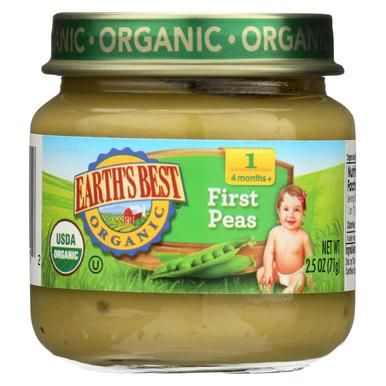 Legumes is a family of products that includes peas, chickpeas, peanuts, beans and lentils, etc.
Legumes is a family of products that includes peas, chickpeas, peanuts, beans and lentils, etc.
There is a high degree of cross-reactivity between lentils, chickpeas and peas. In addition, pea allergy can also occur due to IgE-mediated (antibody-mediated) cross-reactivity between peas and peanuts.
pea soupChildren's body can react to allergens in peas such as isoflavone reductase, globulin, glutelin, vikilin, vivilin. And most importantly, these allergens are resistant to heat and chemical treatment.
Cases of reactions to inhalation of vapors from cooking peas have been observed. Cases of allergies to boiled peas have also been reported, but no allergies to green peas have been found in these patients.
There is a chance for a child to develop an allergy to peas over a period of time, especially if the portion is too large. But before giving peas to a child, it is recommended to consult a doctor and always adhere to the 4-7 day waiting rule when peas are introduced into complementary foods or any other food in the diet.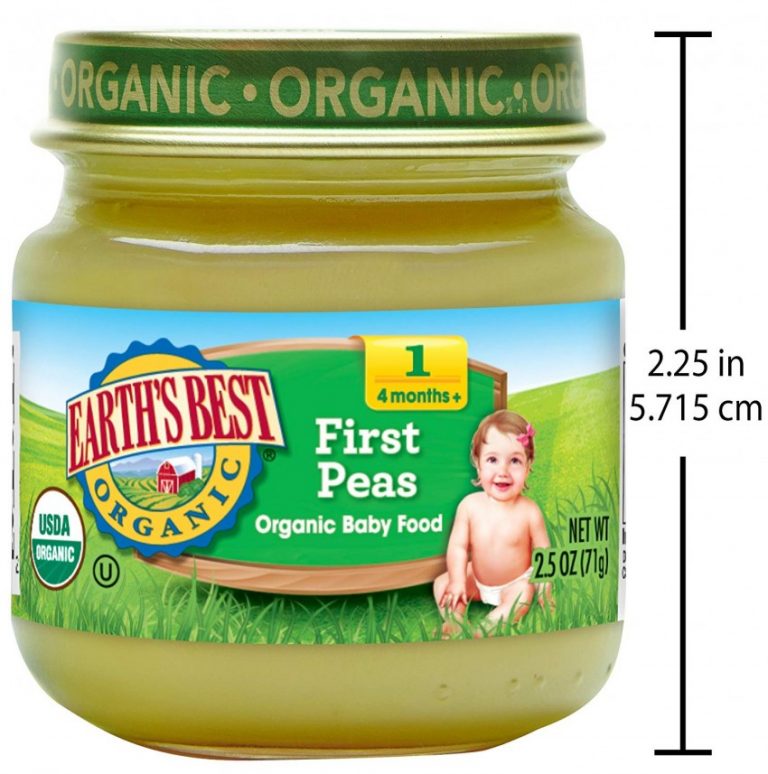 It is better to give less than more.
It is better to give less than more.
Symptoms of pea allergy vary among children. Some symptoms may be mild, while others may be severe. Mild symptoms include rashes, hives, itching in the mouth, throat, lips or entire face, stomach cramps, vomiting and coughing, etc.
Severe symptoms include shortness of breath, shortness of breath and rapid heartbeat, anaphylactic shock which can cause choking and severe breathing difficulties.
It is best to seek medical attention regardless of mild or severe allergy symptoms. Timely action will help to avoid complications, as well as help in diagnosis and treatment.
How to give green peas to children?
For the first feeding, green peas should be boiled in clean water. Beat with a blender and give in the form of pea puree. Babies love bright green puree because of its sweet taste and smooth texture. Depending on how much your child eats, you can store the puree in small bags, ice cube trays, or in a zip-lock freezer bag. Up to 2 years, it is better to give the child only in the form of baby puree. Either neat or mixed with other vegetables.
Up to 2 years, it is better to give the child only in the form of baby puree. Either neat or mixed with other vegetables.
Why love pea puree?
green peas for children- Versatility: Ideal as a first bean puree for children and as an addition to a range of dishes. It is worth trying to serve peas with fish, seafood, chicken or use as a sauce.
- A sensory explosion: pea puree hits all the senses, from delicious taste, fresh aroma to bright green color.
- Quick and easy to prepare : Prepare a gentle puree in less than ten minutes.
- Available all year round : Using frozen peas means the family can enjoy this puree no matter the season.
- Freezing : frozen peas are ideal, both pureed and peas.
How to select and store peas
Only about 5% of grown peas are sold fresh. The rest are either frozen, or canned, or dry.
green peas for children When purchasing fresh green peas , we are looking for strong pods, velvety and smooth. Their color should be a lively medium green. Those whose green color is particularly light or dark, or yellow, whitish or mottled grey, should be avoided. Also, don't choose pods that are swollen, soaked in water, or have mold residue. The pods should contain peas of sufficient quantity and size so that they do not have a lot of empty space. It is enough to shake the pod to understand whether it is empty or full. All varieties of fresh peas should be stored in the refrigerator, as the heat will speed up the formation of sugar in the starch.
Their color should be a lively medium green. Those whose green color is particularly light or dark, or yellow, whitish or mottled grey, should be avoided. Also, don't choose pods that are swollen, soaked in water, or have mold residue. The pods should contain peas of sufficient quantity and size so that they do not have a lot of empty space. It is enough to shake the pod to understand whether it is empty or full. All varieties of fresh peas should be stored in the refrigerator, as the heat will speed up the formation of sugar in the starch.
Unwashed peas stored in the refrigerator in a bag or unsealed container will keep for several days. Peas are not stored in a pod for a long time, so if you bought a lot, then it is better to peel them and store green peas separately in the refrigerator for up to 5 days or in the freezer for up to 6-12 months.
green peas complementary foods Unlike round pea pods, sweet pea pods are flat. Choose the smaller size as they tend to be sweeter.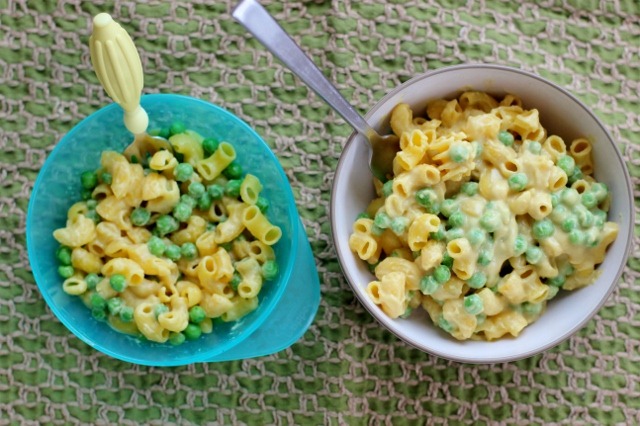
To check the quality of peas, it is enough to open one of them and make sure that it is fresh. They should be bright green in color, firm and plump.
Dry peas must be stored in a dry, dark place, preferably in glass. If peas are bought by weight, then we look at the peas themselves so that they are the same color, dry, without mold and dampness, without pests. You can store about 12-24 months, depending on the variety of peas.
Pesticides and peas
Peas in Russia are classified as products with a low pesticide index, apparently because they are relatively easy to grow in any of our territories, they are not whimsical, there is water and sun, they will be happy.
But in 2019, Rospotrebnadzor identified a pesticide, the herbicide 2,4-D acid, in the Mistral brand of peas. Hope they fixed it.
Of course, it is better for children to buy an organic product that is grown without pesticides and nitrates.
complementary food peas
Contraindications
Peas are a difficult product to digest, which complicates the child's gastrointestinal tract. Therefore, if children suffer from colitis or enteritis, then you should refrain from the early introduction of peas into complementary foods and consult a doctor. Also, peas can increase gas formation, which will lead to abdominal pain. With frequent diarrhea or constipation, it is also not advisable to give peas in large portions. Green peas are not recommended for kidney disease. Boiled peas also contribute to an increase in uric acid in the body and the accumulation of salts. You can not this product with diseases such as cholecystitis, nephritis, kidney stones, increased blood clotting, gout and any intestinal diseases.
Therefore, if children suffer from colitis or enteritis, then you should refrain from the early introduction of peas into complementary foods and consult a doctor. Also, peas can increase gas formation, which will lead to abdominal pain. With frequent diarrhea or constipation, it is also not advisable to give peas in large portions. Green peas are not recommended for kidney disease. Boiled peas also contribute to an increase in uric acid in the body and the accumulation of salts. You can not this product with diseases such as cholecystitis, nephritis, kidney stones, increased blood clotting, gout and any intestinal diseases.
Suggested way of consumption
Pea and rice brothSteaming or roasting green peas is an easy and healthy way to prepare this vegetable. Throwing peas in ice water after cooking makes for an even smoother puree for your baby! Peas are sweet and delicious, and can be added to children's meals for a nutritional boost.
Up to 1 year, green peas can only be boiled or baked in the oven, and then made into baby puree. After a year, you can cook soups or add 1/3 of green peas to mashed potatoes, you get an interesting color and taste.
After a year, you can cook soups or add 1/3 of green peas to mashed potatoes, you get an interesting color and taste.
The most common cooking method is traditional when used in combination with vegetables or potatoes. Boiled peas are also often used in salads or with rice. A well-known option is cooking green peas with meat stew method . Another alternative would be Pea Soup or Delicious Vegetable Puree. In Russia, you can also find pies with peas, pate, pancakes, cutlets, cereals, etc.
My favorite recipe for baby puree is to mix peas and other vegetables in a 1:3 ratio, about 1/3 of a pea. And add the fried onions before beating until smooth. It turns out tasty and satisfying.
Freezing peas
Peas are ideal for freezing. It does not lose taste, texture and smell. What more could you ask for? It can be frozen as green peas or boiled as a soup dressing. I already wrote about pea soup with bacon, how I freeze it in the form of a soup base.
Children's green peas are easy to freeze. In season, green sweet peas are bought, which get rid of the pod, and the peas are washed, dried, and then frozen in special bags. About 600 grams of green peas are enough for me for the winter. I cook soups with it, I make Olivier. Honestly, I stopped buying canned peas. Boiled and put in a salad, more benefits. You can store frozen peas for about 6-12 months. Moreover, it behaves perfectly, ice rarely forms on it, especially if it is frozen correctly.
Someone likes to blanch peas for 1-2 minutes, the shelf life is longer, but I don’t have it for more than 6-8 months.
In general, I recommend frozen over canned peas and acknowledge the benefits of fresh over frozen. Therefore, it is possible to buy fresh green peas, then we buy it, there is no way, we take frozen.
Why is it better to freeze it yourself in summer? But because the stores already sell old green peas. It is not as tender, it is suitable for soups, but not for baby food or salad.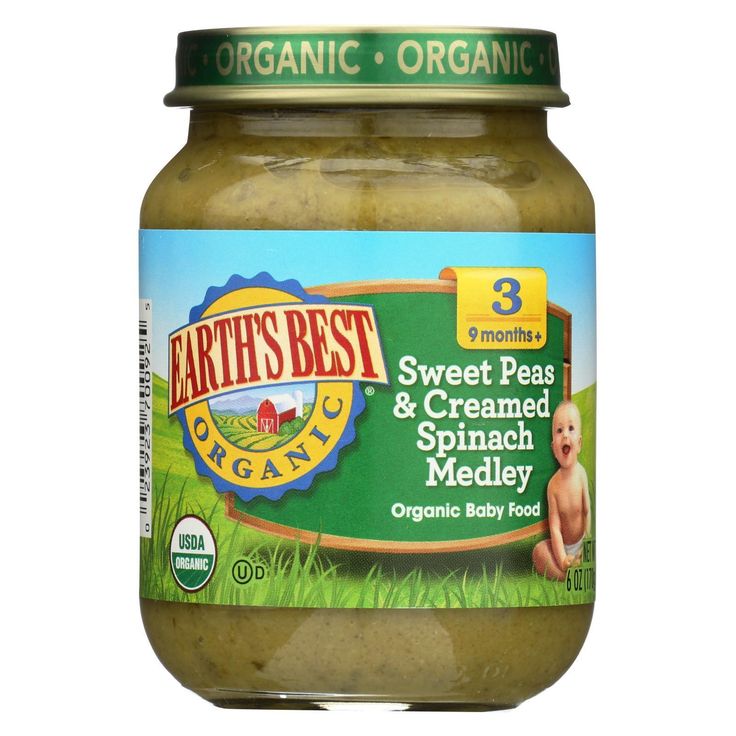 Therefore, in the summer I myself choose green peas, I am engaged in separation and freezing.
Therefore, in the summer I myself choose green peas, I am engaged in separation and freezing.
How to prepare green peas for children?
canned peasRemove green peas from the pod, rinse under running water.
Steam: Put the peas in the slow cooker or steamer and cook for about 5-10 minutes, depending on the variety of peas.
Boil: Put the peas in boiling water, cook over high heat until tender, about 15-20 minutes. Depends on the youth of the peas, the younger, the less time is needed for cooking. Ready peas are tender, it is important that the shell should not burst.
Bake: Peas are baked in the oven for about 30-40 minutes, you can add a little butter for a nice taste.
After cooking the green peas, keep them under cold running water for about 3 minutes to make the puree more tender.
Preparing the puree: Put the cooked boiled peas in a blender and blend until smooth. You can add liquids or breast milk. For children 10-12 months old, you can additionally pass pea puree through a plastic sieve.
You can add liquids or breast milk. For children 10-12 months old, you can additionally pass pea puree through a plastic sieve.
How to prepare ripe peas for children?
cook peasMature peas must be soaked before cooking. Ideal for the night, but can be for a couple of hours. Soaking reduces the cooking time by 20-40 minutes. Then you can simply boil in water, the cooking time is up to 2 hours, depending on the degree of splitting of peas.
But I cook all legumes differently. On my site I have already written about this method, but I will repeat.
I throw soaked peas into boiling water. I put in 2 times more water. For about 1 cup of peas, 2 cups of water. And then I cook it for 5 minutes. I usually do this in the morning or at night. To forget about peas for a few hours. After 5 minutes of simmering or boiling, I wrap the pot in something warm and forget about it. Usually about 4 hours of slow cooling is enough for the peas to reach readiness. Very convenient way, economical in terms of electricity.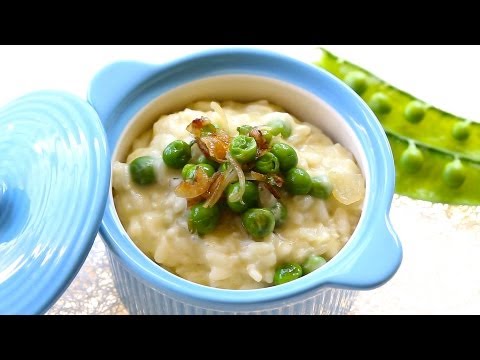
Finger food and green peas
Green pea pureeOnly green peas are suitable for finger food (simply because they are tastier and brighter). It is most often chosen by mothers for tweezing. It is ideal to take peas with your fingers and send them to your mouth. Up to 2-2.5 years, it is better to take boiled green peas of sweet varieties, after which you can take fresh ones.
In principle, many doctors are sure that after 12 months it is already difficult to choke on a small pea, but they still advise crushing them with a fork in order to avoid various situations with suffocation. We also crush fresh peas for the first time.
It is also important to know that if a child swallows a whole pea, then its size allows you to go out naturally in a few days.
Ready-made baby food from peas
Soup from peas Mostly green peas are found in ready-made baby food, but peas can also be found in multicomponent purees. In its pure form, puree was discontinued.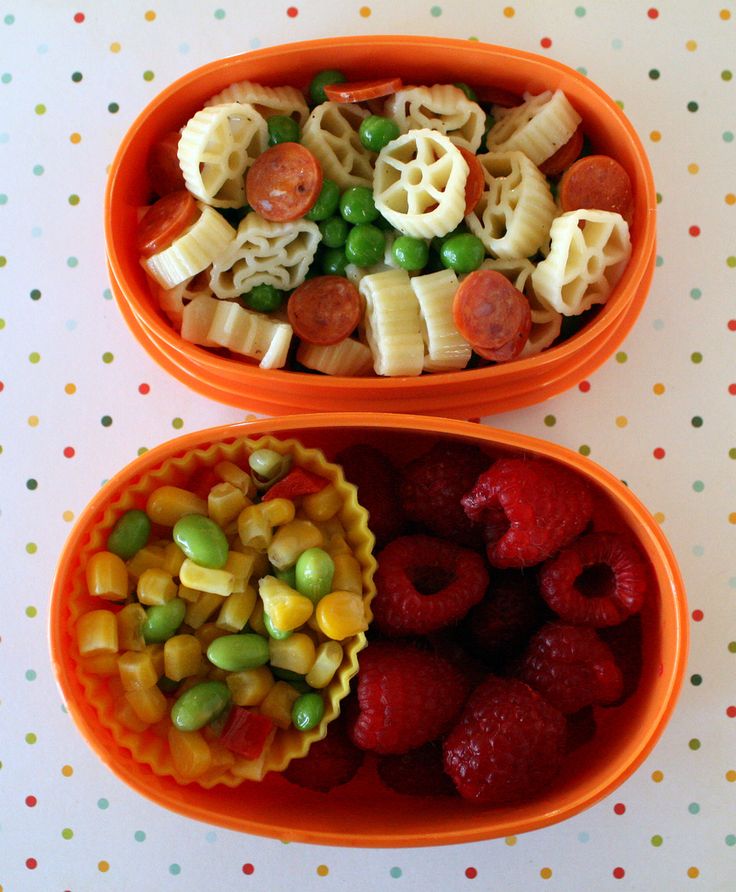 On the websites of baby food manufacturers, green peas are not presented in the line of one-component purees. Previously, he was at Grandma's Lukoshka, Hipp, Gerber.
On the websites of baby food manufacturers, green peas are not presented in the line of one-component purees. Previously, he was at Grandma's Lukoshka, Hipp, Gerber.
gerber
- puree green pea peas, from 6 months, 125 grams
- puree vegetables with pieces of beef with 12 months of 190 grams
- Assorted vegetable puree from 7 months 125 gram
- Puree vegetables-noodles-chicken from 1 year 220 gram (peas)
pies first, first157 -soup with chicken, from 7 months 190 gram
Sempler
- Sempler
- from 12 months 190 gram
- Puree vegetables with beef meatballs, from 9 months 190 gram
- Sauteed vegetables with sea bass from 12 months 190 gram
- Puree potato-vegetable-chicken ragout from 12 months 190 gram
Heinz 6
Heinz 6 navy pasta with pieces from 10 months 190 grams (peas)
Foods that go well with peas:
green pea soup- carrots,
- cauliflower,
- potatoes,
On our site Encyclopedia Baby Food there is useful information on the nutrition of your children, which is useful for everyone, and we update the site "Encyclopedia Baby Food" constantly and try to search and write only excellent, verified and necessary information for you and your children.
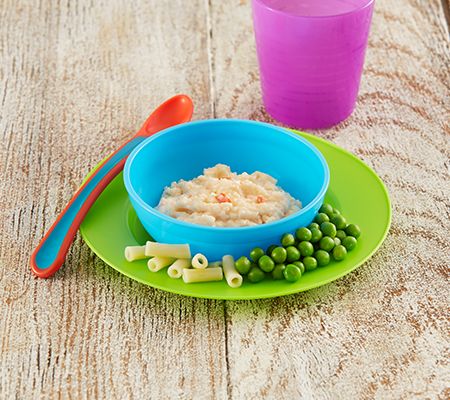
Disclaimer No. 1: It must be understood that the author of the articles on the Baby Food Encyclopedia website is not a medical staff, “I am not a doctor.” The information I share is based on my own experience. My goal is not to teach you how to eat or feed your child, but to talk about how we did it, what new things I learned or read. This expands the picture of Baby Food knowledge, gives you a glimpse of the whole process so you can decide if you like it or not.
Disclaimer No. 2 : However, the above does not cancel a visit to the pediatrician. Before you start complementary foods, you need to get his professional opinion on the best way to introduce new foods for your baby. I also draw your attention to the fact that you need to look at the original date of the published articles, because some of the "best practices" may have changed. Always check with your child's pediatrician about complementary foods and their health.
Disclaimer #3: Keep in mind that every family is unique, every situation is also completely unique.
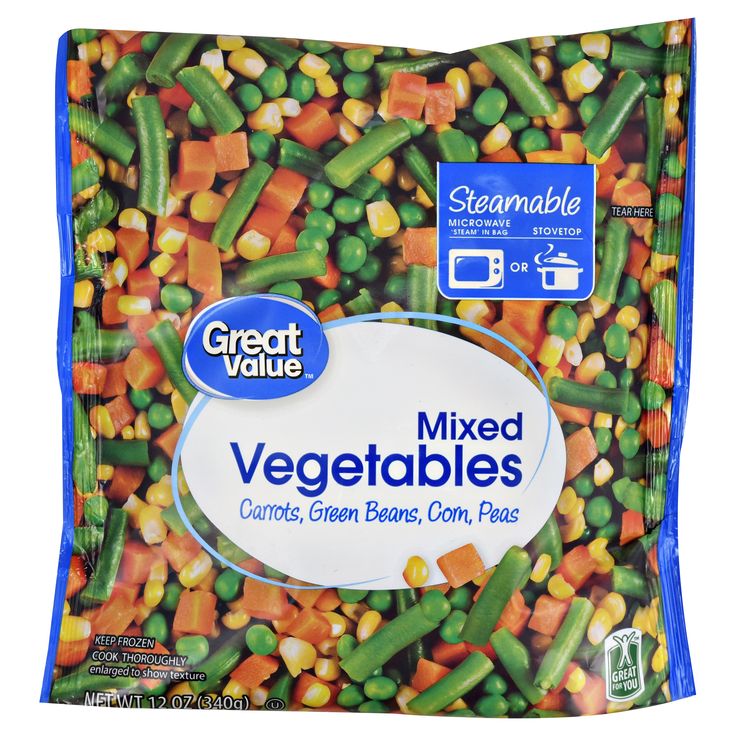 There are no universal solutions. Only you can find what works best for you. Certain goals require certain sacrifices and priorities - not everyone wants to make those choices, and that's GREAT! Just know what you want to achieve, and be ready to get to work, putting the best of your strength!
There are no universal solutions. Only you can find what works best for you. Certain goals require certain sacrifices and priorities - not everyone wants to make those choices, and that's GREAT! Just know what you want to achieve, and be ready to get to work, putting the best of your strength! Disclaimer No. 4: On the Encyclopedia Baby Food website, photos from books on baby food with attribution are used to better understand the information (Article 1274, paragraph 1, part four of the Civil Code of the Russian Federation). Literature on baby food is found in the public domain on the Internet.
Apricot puree with chicken
Banan-global puree
Banana puree
borsch
Bousse broth with peas and rice
Botterbrod with kohlrabi
Rapid dessert
Grounds Buckwheat porridge with apricots
Buckwheat porridge with banana
Buckwheat pilaf
Children's sausage
Children's milk porridge with banana
Children's vinaigrette
Children's ketchup
Children's cucumber salad
Children's salad Olivier
Children's porridge biscuits
Children's puree of strawberries, bananas, yellow cherries, yoghurt and biscuits with cereals
Children's puree with cottage cheese and fruits
Homemade yeast bread with flax flour
Homemade cheese
Homemade pizza
2 Breakfast outside Kohlrabi appetizer
Roasted cauliflower
Roasted carrots
Roasted carrots and cherries with millet
Winter salad with Jerusalem artichoke
Cabbage with white beans
Cabbage salad like in a canteen
Mashed potatoes
Quinoa and pumpkin porridge
Quinoa porridge
Breakfast cereals
Quinoa and apple
Strawberry puree
Strawberry puree with banana
Strawberry compote
Wild apple and raspberry compote
Thermo-steamed dried fruit compote for children 8 months
Corn porridge
Corn porridge with pear
Corn porridge with pumpkin
Corn porridge with pumpkin and carrots
Corn porridge with apple and carrots
Chicken liver in the oven
Chicken cutlets with carrots
Chicken with carrots, bell peppers and potatoes
Navy pasta
Macaroni with orange sauce
Gremolata pasta
Muffins with vegetables and egg
Jacket potatoes
Milk vermicelli soup4 Carrot puree 5-0425 Carrot-rice casserole
Carrots with chicken
Fly agaric from eggs and tomatoes
Meat envelopes
Homemade Tarragon drink for children
Vegetable puree from cauliflower and carrots
Vegetable soup with corn semolina
Vegetable soup with cheese and corn semolina
Vegetable soup with spinach
Vegetable puree soup with bell pepper
Oatmeal porridge
Pollock fritters
Hot kefir fritters
Cauliflower scrambled eggs
Spinach and Cheese Omelet
Omelette Pancake
Peach Puree
Baked Apples 7 months +
Zucchini and Carrot Pie
Zucchini Pie
Rice and Zucchini Pie
Fish Pie
Fish and potato pie
White cabbage pizza
Lavash pizza
Zucchini, tomato and sausage pizza
Tomato and olive pizza
Spinach pizza
Rabbit pilaf
Chicken pilaf with green peas and corn Puree
and cherries
Banana, cottage cheese and porridge puree 4 cereals
Broccoli (cauliflower) puree
Broccoli, courgette and cauliflower puree
Blueberry puree
Pear puree
Pear and banana puree
Pear and banana puree, baked
Pear and pumpkin puree 7 months +
Pear, pumpkin and peach puree
Pear, apple, plum and prunes puree
Blackberry puree
Turkey puree
Zucchini puree 90 zucchini and broccoli
Zucchini, carrot and potato puree
Quinoa and banana puree
Quinoa and carrot puree
Quinoa, banana and carrot puree
Quinoa, squash and carrot puree
Quinoa, peach and raspberry puree
quinoa, cauliflower, apple, peas and mint
Quinoa, apple, pear and raisin puree
Quinoa, apple, carrot puree
Rabbit, broccoli and cauliflower puree
Chicken, carrot, potato, apple and pea puree
Raspberry, cherry and banana puree
carrots
Carrot and apple puree
Carrot, potato, broccoli puree with cheese
Carrot, potato, apple and quinoa puree
Carrot, pumpkin, apple and prunes puree
Carrot, apple and potato puree
Turnip and carrots
Plum puree
Cottage cheese, strawberry and banana puree
Pumpkin puree
Pumpkin and banana puree
Pumpkin and squash puree
Pumpkin and apple puree
Pumpkin, apple and banana puree
Cauliflower and broccoli puree
Cauliflower puree and potatoes
Cauliflower and rice puree
Cauliflower and apple puree
Cauliflower, green peas and squash puree
Cauliflower, turkey and potato puree
Cauliflower, potato and squash puree
Cauliflower, carrot and broccoli puree
Cauliflower, carrot, cheese and rice puree
Cauliflower, apple and courgette puree
Zucchini puree
Zucchini and potato puree
Zucchini, carrot and apple puree 90 cherries
Blueberry puree
Prune puree
Apple, pumpkin, carrot and some curry puree
Apple and pear puree
Apple and strawberry puree
Apple, strawberry and sweet cherry puree
Apple, peach and banana puree
Carrot and pumpkin puree
Cottage cheese and banana puree
Turkey, potato and carrot stew
Zucchini, carrot and broccoli stew
Fish, potato, carrot and broccoli stew
Rice porridge
Whole grain rice porridge
carrot
Rice porridge with pumpkin
Rice porridge with apples
Rice porridge with apple and pear
Rice porridge with apple and pumpkin
Fish cakes with vegetables
Semi-cooked fish
Fish meatballs with ketchup
Baby Fish Soup
Salmon and Celery Fish Soup
Carrot and Kohlrabi Salad
Chickpea Salad
Chickpea and Cabbage Salad
Laziest Soup
Creamy Kohlrabi Soup
Oatmeal Smoothie4 Sauce Cheesy Pizza
Pea and Bacon Soup
Baked Vegetable Soup
Kohlrabi Soup
Salmon Soup
Cauliflower Soup
Turnip Potato Soup
Meatball Soup for the Picky Eater
Green apple kohlrabi soup
Rabbit, pumpkin, potato, broccoli and cauliflower soup
Beetroot soup
Pumpkin mushroom soup
Broccoli and celery soup
Soup/stew Pork with Potatoes and Carrots
Cheburek Chebureks
Pumpkin Cheese Sauce (Annabelle Carmel Recipe)
Buzz Lightyear Sandwich
Pumpkin Apple Puree
Pumpkin Apple Juice
Pumpkin Cake
Pumpkin Soup 9 Puree
Fruit Salad5 Bread lavash
Cauliflower with cheese
Linden tea and thyme
Experimental noodle soup with lentils
Apple puree
Apple juice
Don't be afraid and add me to VK and Instagram, Odnoklassniki!
Like this article? Subscribe to site updates
"Encyclopedia Baby Food"!
Don't forget to bookmark us! (CTRL+SHIFT+D) Subscribe to the site, comment, share in social networks.

On our site Encyclopedia Baby Food there is useful information on the nutrition of your children, which is useful for everyone, and we update the site "Encyclopedia Baby Food" constantly and try to search and write only excellent, verified and necessary information for you and your children.
Disclaimer No. 1: It must be understood that the author of the articles on the Baby Food Encyclopedia website is not a medical staff, “I am not a doctor.” The information I share is based on my own experience. My goal is not to teach you how to eat or feed your child, but to talk about how we did it, what new things I learned or read. This expands the picture of Baby Food knowledge, gives you a glimpse of the whole process so you can decide if you like it or not.
Disclaimer No. 2 : However, the above does not cancel a visit to the pediatrician. Before you start complementary foods, you need to get his professional opinion on the best way to introduce new foods for your baby.
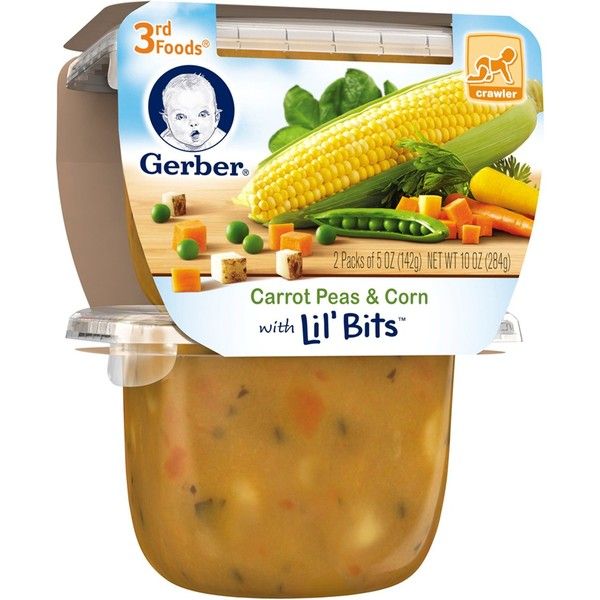 I also draw your attention to the fact that you need to look at the original date of the published articles, because some of the "best practices" may have changed. Always check with your child's pediatrician about complementary foods and their health.
I also draw your attention to the fact that you need to look at the original date of the published articles, because some of the "best practices" may have changed. Always check with your child's pediatrician about complementary foods and their health. Disclaimer #3: Keep in mind that every family is unique, every situation is also completely unique. There are no universal solutions. Only you can find what works best for you. Certain goals require certain sacrifices and priorities - not everyone wants to make that choice, and that's GREAT! Just know what you want to achieve, and be ready to get to work, putting the best of your strength!
Disclaimer No. 4: On the Encyclopedia Baby Food website, photos from books on baby food with attribution are used to better understand the information (Article 1274, paragraph 1, part four of the Civil Code of the Russian Federation). Literature on baby food is found in the public domain on the Internet.

Disclaimer No. 5: Content, editing, proofreading, layout, etc. produced ONLY by the author of the site Encyclopedia Baby food. Therefore, I apologize for spelling, punctuation and stylistic errors. If you notice a mistake, please report it, and do not write angry comments about the illiteracy of the author of the article.
Apricot puree with chicken
Banana-apple puree
Banana puree
Borscht
Broth with peas and rice
Baby mashed potatoes with cottage cheese and fruits
Homemade yeast bread with linen flour
Home cheese
Home pizza
Breakfast on the street
Kolrabi snack
Baked carrots
Baked carrots and cherries with a bunch of 9042 with white beans
Cabbage salad as in the dining room
Mashed potatoes
Quinoa and pumpkin porridge
Quinoa porridge
Breakfast cereals
Quinoa and apple
Strawberry puree
Strawberry puree with banana
Strawberry compote
Compote of wild apples and raspberries
Compote of dried fruits steamed in a thermos for a baby over 8 months old
Corn porridge
Corn porridge with pear
Corn porridge9 with pumpkin
Corn and carrot porridge2 Corn porridge with apple and carrots
Chicken liver in the oven
Chicken cutlets with carrots
Chicken with carrots, sweet peppers and potatoes
Navy pasta
Pasta with orange sauce
Pasta with Gremolata
Muffins with vegetables and egg
New potatoes in their skins
Vermicelli milk soup
Carrot and potato puree
Carrot and rice casserole
Carrot with chicken
Fly agaric from eggs and tomatoes children
Vegetable puree with cauliflower and carrots
Vegetable soup with corn semolina
Vegetable soup with cheese and corn semolina
Vegetable soup with spinach
Vegetable soup with bell peppers
0425 Oatmeal porridge
pancakes from polions
pancakes on hot kefir
omelet in the package
Omlet with broccoli and colored cabbage
Overlet with spinach and cheese
Persian pueres
pier 7 months +
cup
Rice and zucchini pie
Fish pie
Fish and potato pie
White cabbage pizza
Lavash pizza
Zucchini, tomato and sausage pizza
Tomato and olive pizza
Spinach pizza
Rabbit pilaf
Chicken pilaf with green peas and corn
Banana and cherry puree
Banana, cottage cheese and porridge puree 4 grains
Broccoli (cauliflower) puree
Broccoli, squash and cauliflower puree
Blueberry puree
Pear puree
Pear and banana puree
Pear and banana puree, baked
Pear and pumpkin puree 7 months +
Pear, pumpkin and peach puree
Pear, apple, plum and prunes puree
Blackberry puree
Turkey puree
Zucchini puree
Zucchini and broccoli puree
Zucchini, carrot and potato puree
Quinoa and banana puree
Quinoa and carrot puree
Quinoa, banana and carrot puree245 , zucchini and carrots
Quinoa, peach and raspberry puree
Quinoa, cauliflower, apple, pea and mint puree
Quinoa, apple, pear and raisin puree
Quinoa, apple, carrot puree
Rabbit, broccoli and mint puree cauliflower
Chicken, carrot, potato, apple and pea puree
Raspberry, cherry and banana puree
Carrot puree
Carrot and apple puree
Carrot, potato, broccoli puree with cheese
Carrot, potato, apple and quinoa puree
Carrot, pumpkin, apple and prunes puree
Carrot, apple and potato puree
Turnip and carrot puree
Plum puree
Cottage cheese, strawberry and banana puree
Pumpkin puree
Pumpkin and banana puree
and zucchini
Pumpkin and apple puree
Pumpkin, apple and banana puree
Cauliflower and broccoli puree
Cauliflower and potato puree
Cauliflower and rice puree
Cauliflower and apple puree
Cauliflower and green pea puree and squash
Cauliflower, turkey and potato puree
Cauliflower, potato and squash puree
Cauliflower, carrot and broccoli puree
Cauliflower, carrot, cheese and rice puree
Cauliflower, apple and squash puree
Zucchini puree
Zucchini and potato puree
Zucchini, carrot and apple puree
Cherry puree
Blueberry puree
Prune puree
Apple, pumpkin, carrot and some curry puree
toy apple puree apple and strawberry puree
Apple, strawberry and cherry puree
Apple, peach and banana puree
Carrot and pumpkin puree
Cottage cheese and banana puree
Turkey, potato and carrot stew
Zucchini, carrot and broccoli stew
Fish, potato, carrot and broccoli stew
Rice porridge
Whole grain rice porridge
Rice porridge with carrots
Rice porridge with pumpkin
Rice porridge with apples
Rice porridge with apple and pear
Rice porridge with apple and pumpkin
Rice porridge with apple and pumpkin
cutlets with vegetables
Ready-to-cook fish
Fish meatballs with ketchup
Fish soup for children
Fish soup with salmon and celery
Carrot and kohlrabi salad
Chickpea salad
Chickpea and cabbage salad
Laziest Soup
Creamy Kohlrabi Soup
Oatmeal Smoothie
Pot Sauce
Cheesy Pizza Sauce
Pea and Bacon Soup
Roasted Vegetable Soup
Kohlrabi Soup 9045 Cauliflower Soup 9045 Salmon Soup 9045 with potatoes and turnips
Meatball soup for the picky eater
Kohlrabi puree soup with green apple
Rabbit, pumpkin, potato, broccoli and cauliflower soup
Beetroot puree
Pumpkin puree with mushrooms
Broccoli & Celery Soup
Pork Potato & Carrot Soup/Steady
Cheese Chebureks
Pumpkin Cheese Sauce (Annabelle Carmel Recipe)
Buzz Lightyear Sandwich
Pumpkin & Apple Puree
Pumpkin & Apple Juice
Pumpkin Juice 40425 puree soup
Fruit salad
Mango fruit salad
Lavash bread
Cauliflower with cheese
Linden and thyme tea
Experimental vermicelli and lentil soup puree
Apple puree
Apple juice
food allergen.
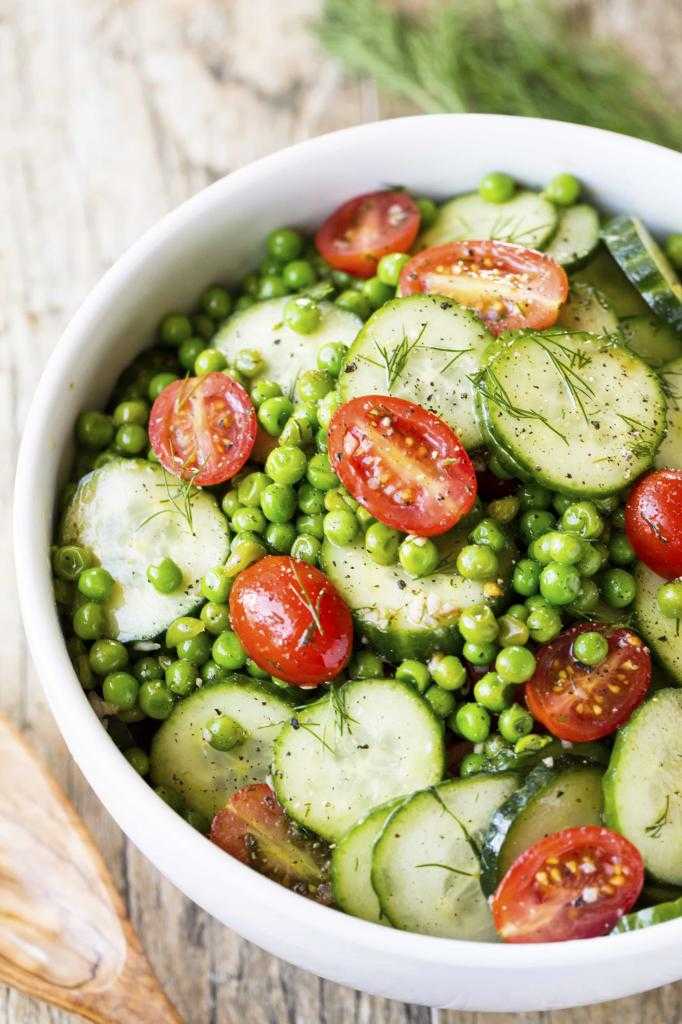 All about pea allergy, its causes and symptoms, its treatment.
All about pea allergy, its causes and symptoms, its treatment. - Main
- Good for allergy sufferers
- FOOD - ALLERGENS
- Peas
The Pea Miracle or Why Only Boiled Peas Can Sometimes Cause Allergies
Peas are one of the oldest crops in the world, which mankind got acquainted with almost at the same time when they began to cultivate wheat.
Pea seeds, which date back to around 7500-5000 BC, have been found in Iraq and Greece. Later finds (about 4000 BC) were found in Central Europe and India (2000 BC).
In Europe of the Middle Ages, dried peas were the main food of the poor, cooked with lard.

This legume changed its status of cheap food only in 1660, when at the court of King Louis XIV they began to prepare ... green peas according to Italian recipes. Since then, such peas have been firmly entrenched in the French menu, and French breeders in 1906 describe about 250 varieties of this legume. But the first frozen peas will be released in 1920 on the other side of the world - in the US state of Minnesota. But canned green peas in 1926 will be produced by the French company Bonduelle.
But today, peas are considered only the fourth most important legume. In terms of production, it lags far behind soybeans, peanuts and beans, and a third of its crop goes to animal feed.
Back to menu for various types of allergies
But peas are a very nutritious food, containing almost as much protein as beef. But, by the way, she loses twice as many calories to peas.
It also contains a lot of calcium, phosphorus, manganese and potassium salts, as well as vitamins A, C, E, K and group B.

Eating peas slows down the aging process, improves brain function, removes toxins, stimulates appetite, and according to some reports, even has an antitumor effect.
At the same time, there are a lot of purines in peas, which can lead to the deposition of urate salts, so it is not recommended to get involved in peas for chronic kidney diseases, gout, breastfeeding and in old age.
Legumes are also a common food allergen. And although peas do not cause allergies as often as compared to such members of the family as peanuts or soybeans, reactions to it are still not uncommon.
People allergic to lentils should be careful when using this product (especially in the Mediterranean region, where there is a high level of cross-reactions between it and peas).
And in children with atopic dermatitis one year and older, apple, carrots, peas and soy cause allergic reactions as often as egg (a common childhood allergen).
In addition, inhalation of boiled pea fumes may exacerbate asthma symptoms.
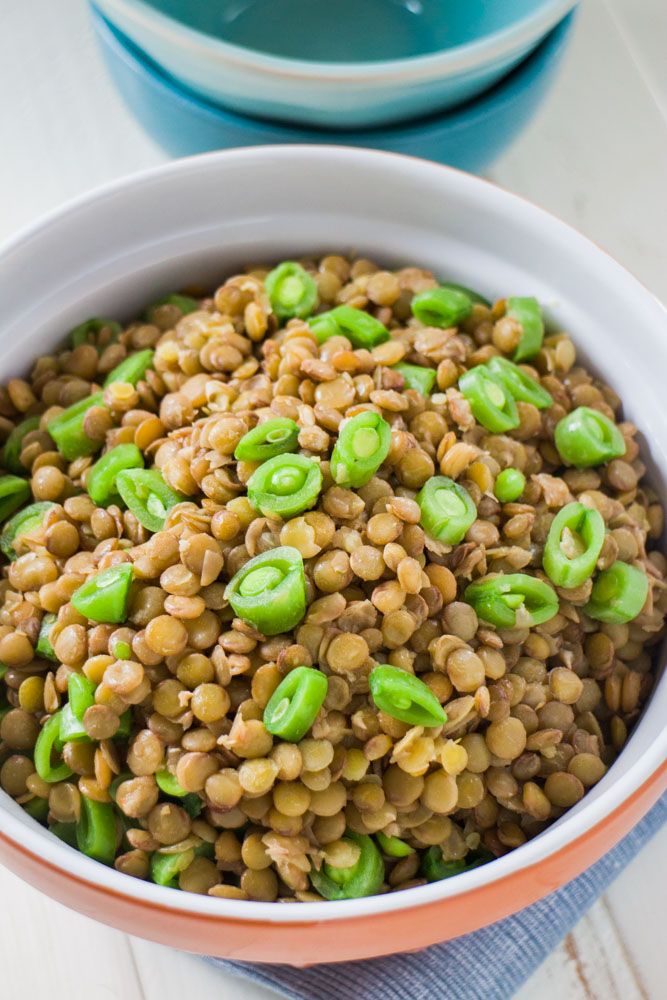 Work in pea processing/processing enterprises also leads to the same result (the so-called "occupational asthma").
Work in pea processing/processing enterprises also leads to the same result (the so-called "occupational asthma").Causes of pea allergy
People with hay fever are more likely to develop sensitivity to peas. For example, in children allergic to cereal pollen, the frequency of positive reactions to peas was 13.7%.
An isoflavone reductase (Pis s IFR) allergen has been found in this legume, which has 56-80% sequence identity with IFR proteins of various plants, eg birch, apple, pear, orange, mango, lychee, carrot and banana.
Unripe, green, peas have low allergenicity. It increases with maturation and accumulation of seed storage proteins - albumins. But the globulin and glutelin fractions also contribute to the allergenicity of green peas.
Vikilin and vivilin are potential major allergens in pea seeds. These proteins cross-react with Len c 1 - vicilin, which is the main allergen in lentils.
A common feature of most legume allergens is their resistance to heat and chemical treatments.
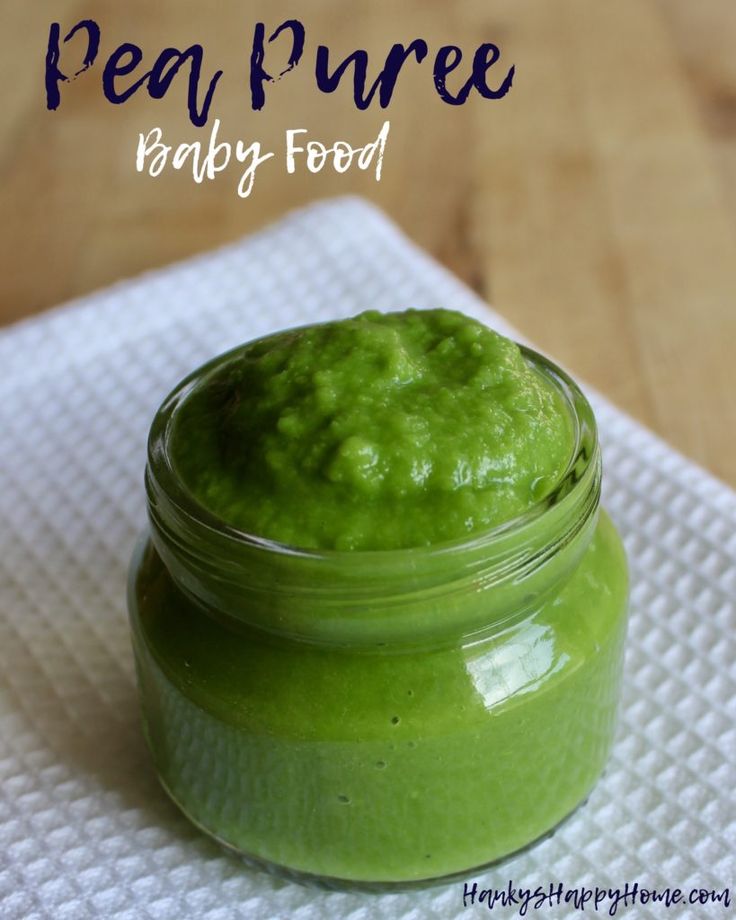
Studies show that albumin retains its allergenicity even when heated to 60°C for 30 minutes or boiled at 100°C for 5 minutes. But its allergenic potential can be reduced by autoclaving at 120°C for 15 minutes.
However, there are five stories in the scientific literature of children who developed an allergic reaction to boiled peas but were able to tolerate raw peas without problems. Later, in all cases, sensitivity to processed, and not raw peas, was confirmed by skin testing.
It is believed that heating can change the three-dimensional structure of proteins: lead either to the stabilization of bonds within the molecule, or to the formation of new ones.
Therefore, it can be assumed that heating increases allergenicity due to a change in protein structure.
Pea allergy symptoms
Most pea allergy symptoms develop within two hours of eating. In this case, an allergic reaction in children and adults can manifest itself in different ways.
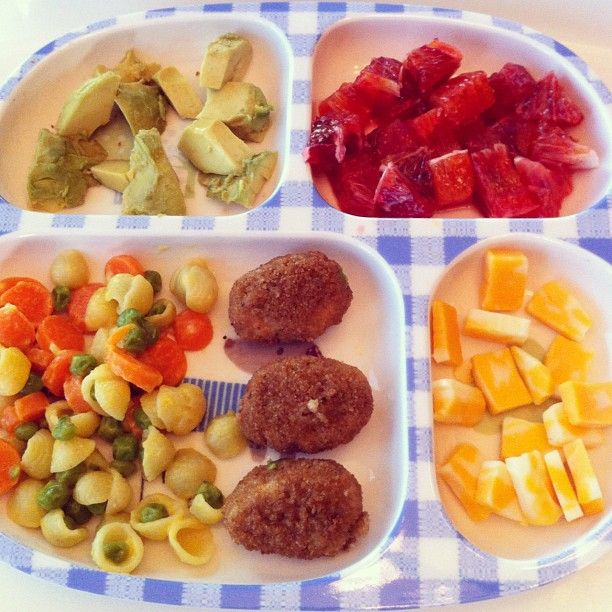 In addition, a child, especially a small one, cannot say what exactly worries him. In this case, parents should pay attention to the excessive capriciousness and tearfulness of the child.
In addition, a child, especially a small one, cannot say what exactly worries him. In this case, parents should pay attention to the excessive capriciousness and tearfulness of the child. Some of the most common symptoms of pea allergy in children are swelling, wheezing, dizziness or weakness, diarrhea and vomiting. If the child is too small, a stomach problem can lead to dehydration, so do not put off a visit to the doctor.
Redness and rash may also develop.
Unlike young children, pea allergy in adults can manifest as oral allergy syndrome (OSA). The main signs of such a condition, which usually occurs with an existing pollen allergy, are:
- tingling,
- itching in the mouth, on the tongue, in the throat,
- itching, redness and swelling of the lips,
- nasal congestion and the like.
Some people may develop more severe symptoms in addition to OAS, while others develop severe symptoms on their own.
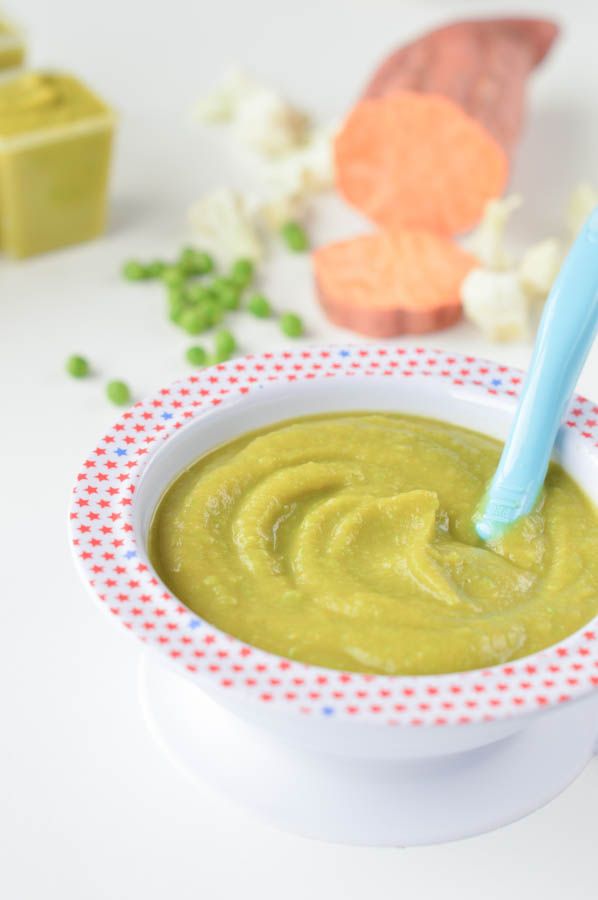 In any case, the following signs of allergy may be observed:
In any case, the following signs of allergy may be observed: - itching
- urticaria, dermatitis
- tingling/swelling of lips, tongue or throat
- chest constriction
- shortness of breath / wheezing
- abdominal pain
- nausea
- diarrhea
- dizziness
- fainting.
In some cases, the reaction can be so severe that it can lead to a severe and systemic manifestation - anaphylaxis.
It can cause sudden drops in blood pressure and lead to blockage of the airways.
In the case of anaphylaxis, the only effective way to stop the reaction is injectable adrenaline. But with mild manifestations of allergies, antihistamines or steroid drugs can cope.
Even if you experience mild symptoms, it is still best to consult a specialist. The danger of food reactions is that their strength can grow with each subsequent manifestation.
Information sources:
- https://uk.


